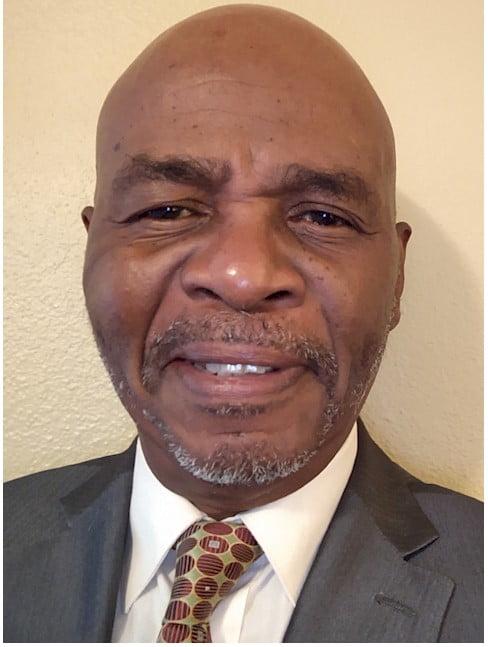Needed: A New Black Student Movement to Address Voter Suppression Initiatives – GDN EXCLUSIVE
by Afi G. Osakwe - GDN Contributing Writer 03/17/2021
Black students protest in the chapel in 1969. Credit: Emory University Photograph collection, Stuart A. Rose Manuscript, Archives, and Rare Book Library, Emory University.

Afi G. Osakwe – GDN Contributing Writer
Why do college students need to use civic engagement as a tool to address voter suppression and the denial of civil rights in the United States? And what does civic engagement look like in order to achieve defined goals and objectives? The answers to these questions require a look back to the Civil Rights Movement (CRM) of the 1960s and an examination of student voter participation in the recent 2018 and 2020 elections. The most recent CRM was rooted in protesting various forms of discrimination in a segregated America. Voting Rights was a core demand of virtually all the protests because they were the historical denial of Black Americans toward their right to full citizenship.
The Voting Rights Act (VRA) of 1965 seemed to offer Blacks long sought-after access to the ballot and protection of the same. In many powerful circles, the VRA was accepted and led to immediate actions to neutralize or repeal it. Yet, upon further analysis of “voter suppression”, the actuality of “modern” or “current” is nothing more than a return to historical practices to deny the vote to millions of Black voters through ever growing strategies, including gerrymandering, to shape local and state representation in favor of those who represent retrenchment to Jim Crow-ism. The issue for students is: What is it that students can do to address the issue of how to achieve greater student voter participation?
To ignore the importance of Black students in the CRM is to ignore the massive, unrelenting student-led protests of that movement. The truth is that opposition to the rights of Black Americans to the ballot was not as determined as the unrelenting opposition of the CRM and students who were highly motivated and significant to its measured success.
Yes, the clock on voting rights has been turned back. It is time, again, to solicit the help of Black college students, and their allies, to lead a new CRM rooted in protecting voting rights and opposing voter suppression. How is this to be accomplished?
Greater Diversity News’ A Call to Colors (ACtC) is committed to supporting student initiatives and all other efforts to defeat voter suppression within a strategic framework where strategies are developed and activated. For instance, there is the need for implementation of student government associations to revise how students elect officers. A reconstruction of this will prepare them to have a knowledgeable vice president ready to assume presidential office without having to learn it as an elected president. The vice-president will be ready to assume office after having been educated in their sophomore or junior year, while at the same time assisting the president to incorporate student initiatives with administrative oversight.
It is within the framework of establishing HBCU-wide administrative initiatives that it becomes imperative to establish nonpartisan groups such as NAACP to organize and help develop organizational skills for students.
To reiterate, two issues that need to be addressed as we prepare students for leadership are (1) next-generation leadership roles and responsibilities and (2) strategic voting and measurement in the next election(s).
Another important issue is whether adult leadership examples are consistent with what we should be teaching students. Of course, students must be part of the process of what is needed for their success.
These are important issues that we have considered in formulating our organizing principles in ACtC. We have two very simple suggestions to make and address the issues. First, help students understand the importance of establishing permanent civic engagement committees in their student government associations (SGAs). That way, voting rights will become a 24/7 endeavor and not just an election season issue. Divine Nine is perfectly positioned to do so: that is, Second, combine their nine different civic/voter engagement strategies into a one model strategy.
These observations and suggestions would benefit from robust public feedback. This is a necessary element for a more efficient and productive leadership. In keeping with this, our continued weekly Zoom strategic meetings will be most instructive for all that we do moving forward. Significant considerations are:
8,16, 24 or more volunteer hours (hours represent 8 hours–one day, 16 hours–two days, and 24 hours–3 days) per election cycle. NAACP students should use their volunteer hours to solicit support from other Black Student and civic organizations by asking their members to volunteer through them.
Suggestions for students are easily modified for other community-based organizations to use. Central to the student efforts is an understanding that civic engagement is a response to attacks on the Civil Rights Act of 1964, the Voters Right Act of 1965, the Immigration Act of 1965, the current HR1 (For the People Act), HR2 (the Moving Forward Act) and pending senate bills. Strategically, recognition that current student activities are the new CRM and represent the Third Reconstruction.
To stay informed about the New Black Student Movement, subscribe to Greater Diversity News’ free eNews editions at greaterdiversity.com .


